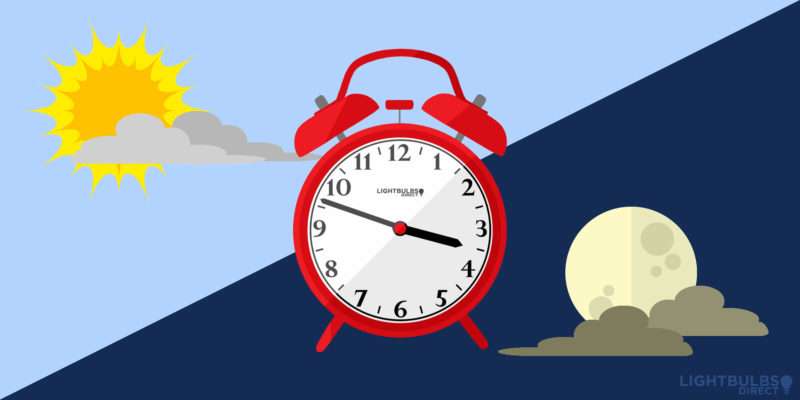It’s that time of year again when we lose an hour of sleep in exchange for the official start of British Summer Time. That time when we will set our alarms to go off one hour earlier, just in case our smartphone clock doesn’t change automatically, even though it does year in, year out…
To help you avoid getting to work late on the morning of the change, we’ve pulled together all the information you need to know exactly when and why the clocks go forward. You can thank us later.
When do the clocks go forward?
This year, the clocks change in the early hours of Sunday 26th March 2023, when they go forward one hour, from 1am to 2am. This marks the start of British Summer Time (BST), which lasts until the clocks go back again in the autumn and we revert to Greenwich Mean Time (GMT).
You may have heard the phrase ‘spring forward, fall back.’ It’s a handy way of remembering that the clocks go forward one hour in spring, and back one hour again in autumn. Yes, calling autumn ‘fall’ is a bit of an Americanism, but ‘spring forward, autumn back’ ruins the pun, and it’s nowhere near as catchy.
What is the difference between Greenwich Mean Time and British Summer Time?
GMT is the time zone the UK is in during the winter, while BST is the one used during the summer. GMT was formerly used as an international standard, and other time zones were measured against it, but that has been superseded by Coordinated Universal Time (UTC).
In short, British Summer Time is the equivalent of GMT+1.
This can get a bit confusing if you need to keep track of times in other countries, especially those that move in and out of different time zones themselves. The US, for example, moved into Daylight Saving time (DST) on Sunday 11th March, when their clocks also moved forward one hour.
Fun fact: Arizona and Hawaii are the only two US states that don’t change to DST, the former because it is so hot during the day that they don’t want to push sunset back an hour, and the latter because its proximity to the equator makes the whole exercise redundant.
Benjamin Franklin, one of the Founding Fathers of the United States, is often (wrongly) credited with the idea, but in the UK, it was down to a builder called William Willett. In 1907, he wrote a pamphlet called ‘The Waste of Daylight,’ in which he explained that the extra hour will increase productivity and also save a considerable amount on lighting costs. Willett died before he saw his idea put into practise, but in 1916, parliament passed the Summer Time Act, establishing the biannual clock changes.
Some argue that the constant clock-changing has become irrelevant. Originally, the longer evenings meant that a lot of energy was saved, as people didn’t need to use as much lighting. These days, with the vast amount of electrical equipment we use day and night, this benefit is said to be negligible.
On the other hand, some argue that the extra daylight benefits our health, as it gives people more time to get out of the house and exercise, and it also helps to mitigate the effects of Seasonal Affective Disorder. Plus, data shows that the longer days help to lower crime levels.
The debate is now gaining traction, to the point where the European Union recently ordered a ‘full evaluation’ into the current use of daylight saving time.
Until those results are published, all you need to do is remember that the clocks go forward one hour at 1am on Sunday 26th March 2023, and celebrate the start of British Summer Time!
READ MORE: When do the clocks go back in Autumn and why?


Thank you so, very much for sharing this logical information. Which I, as I’m sure many others appreciate😷👏🏽